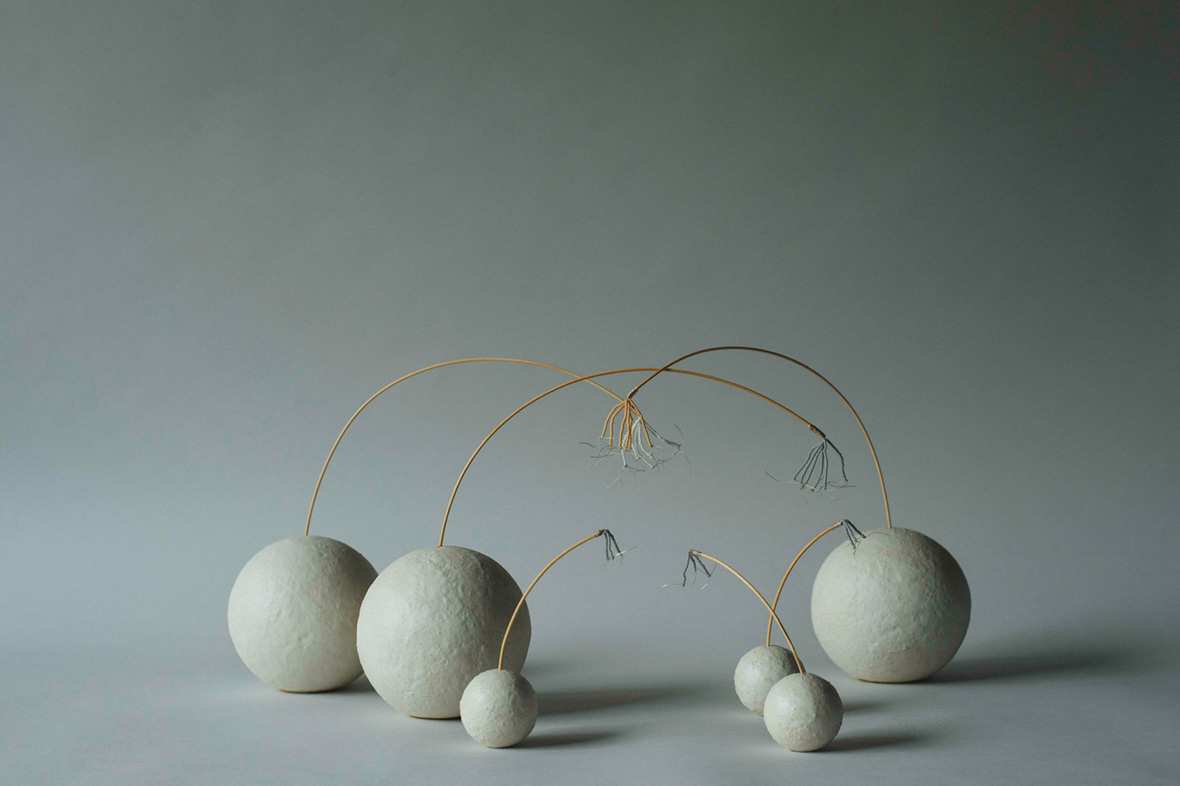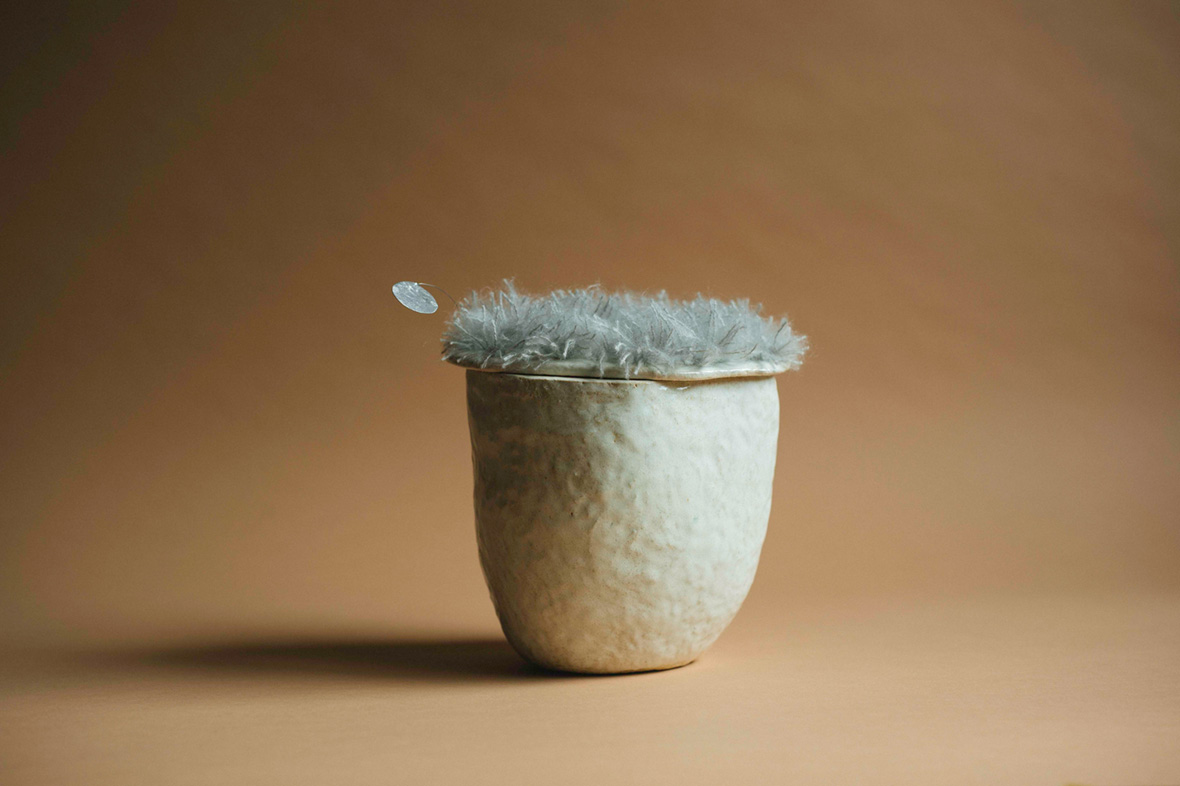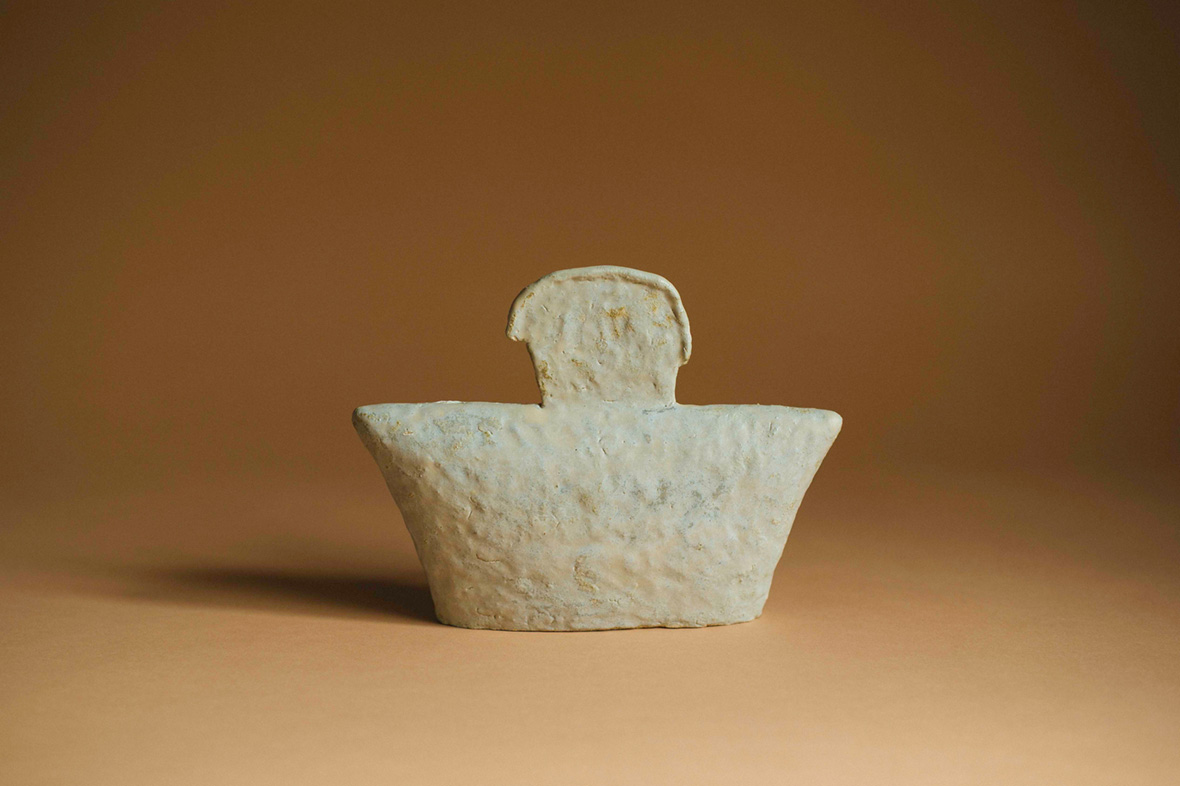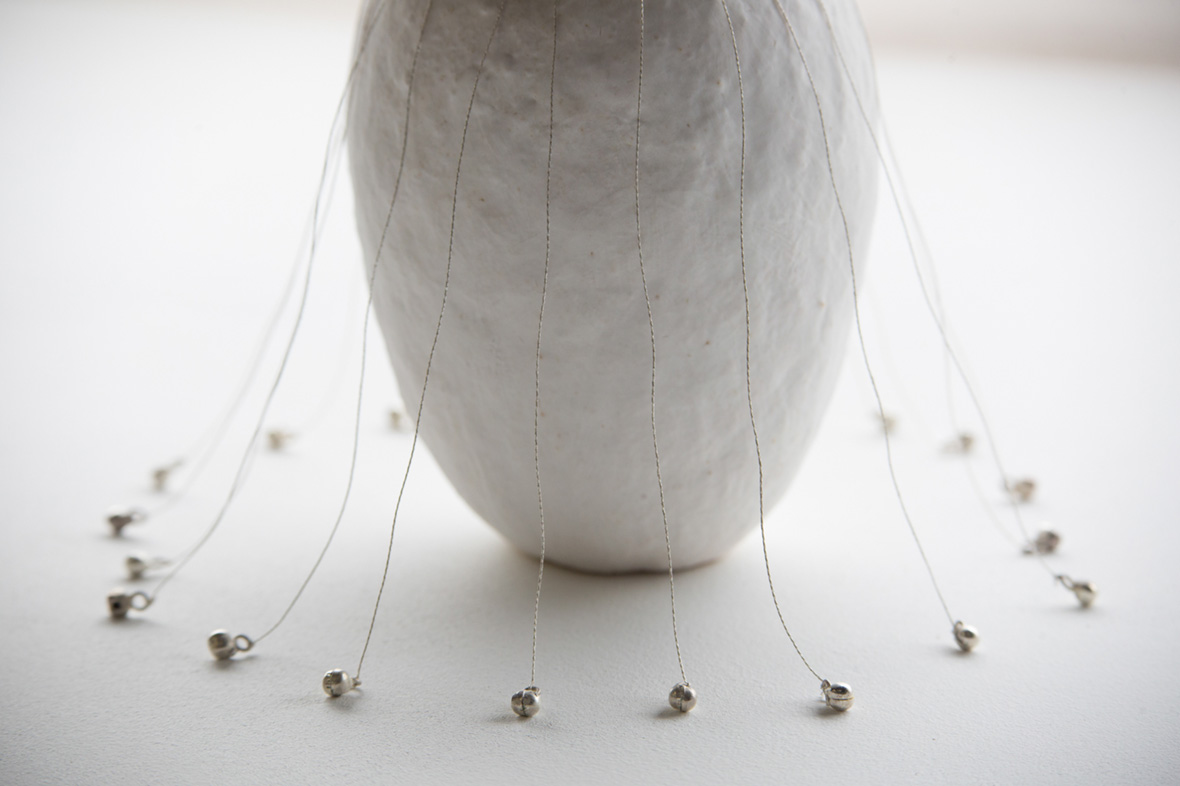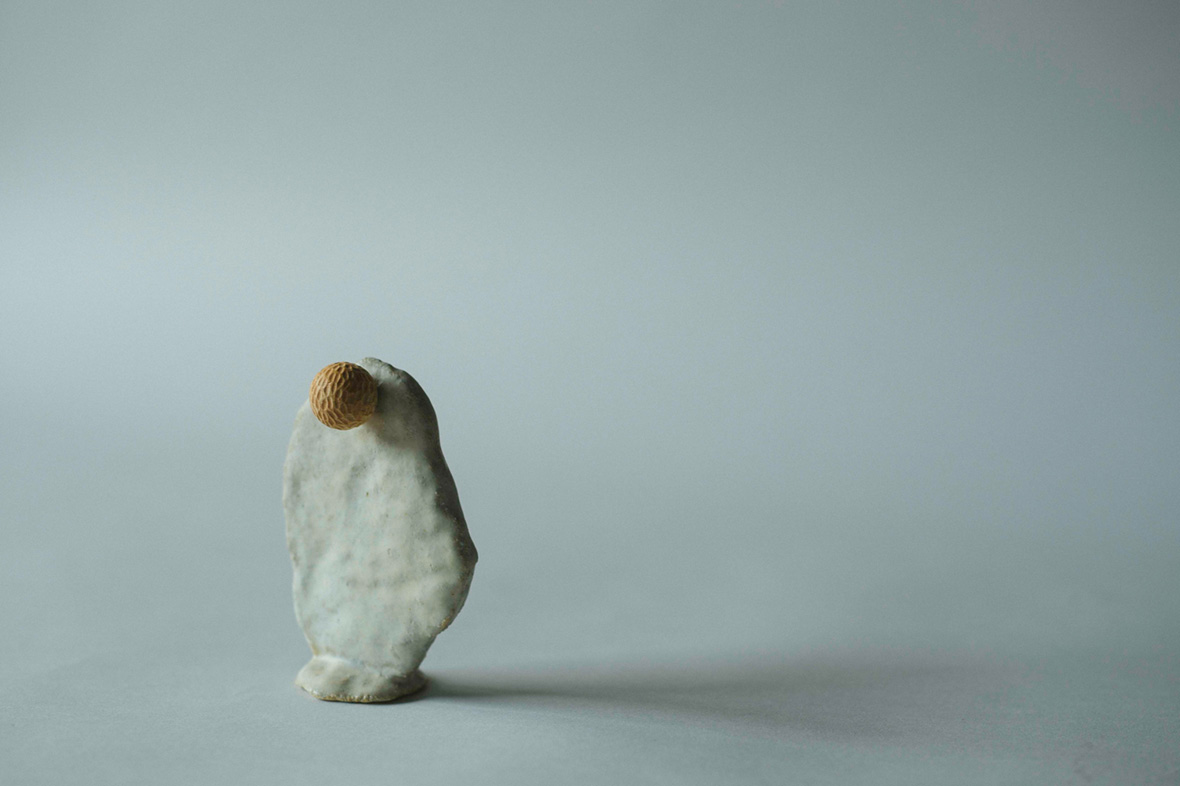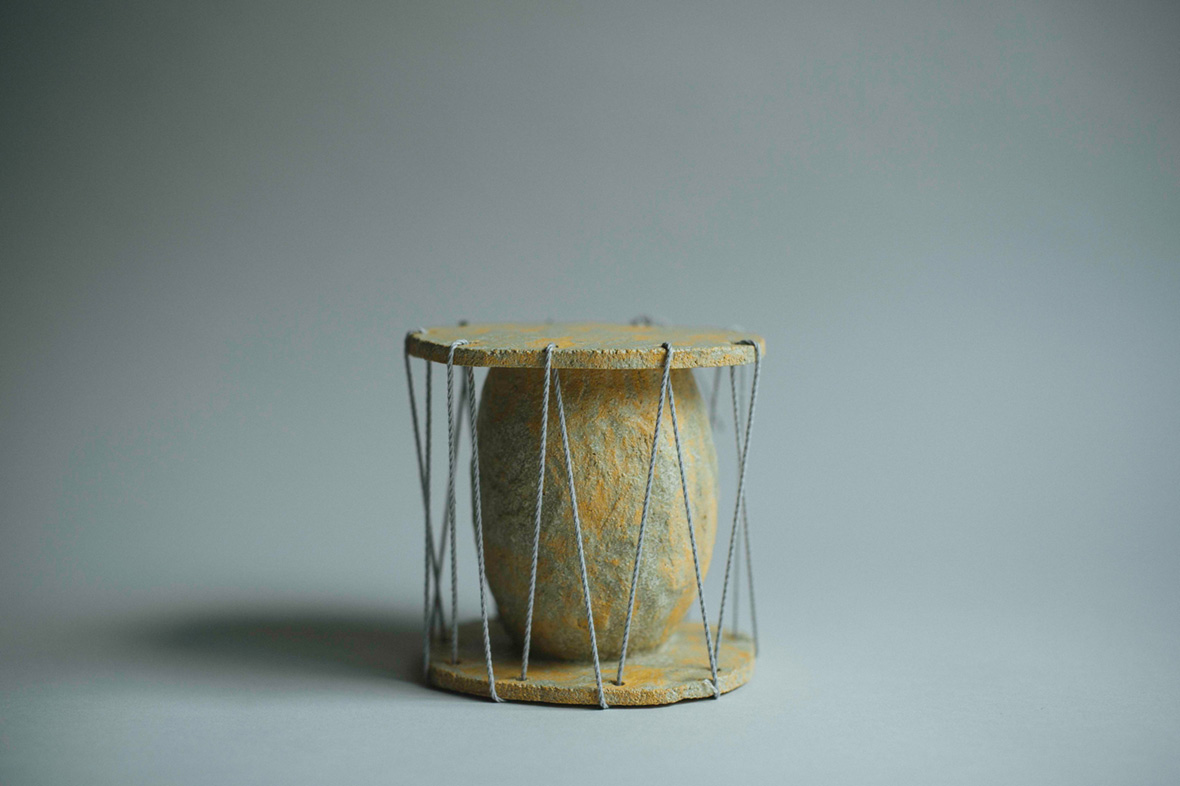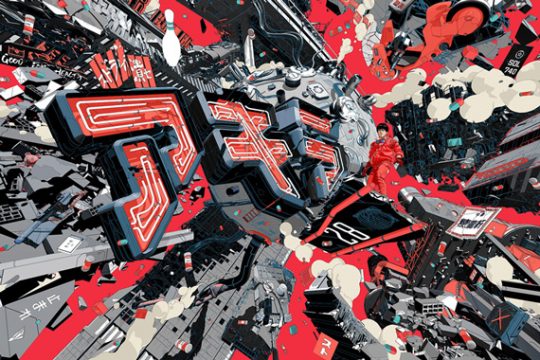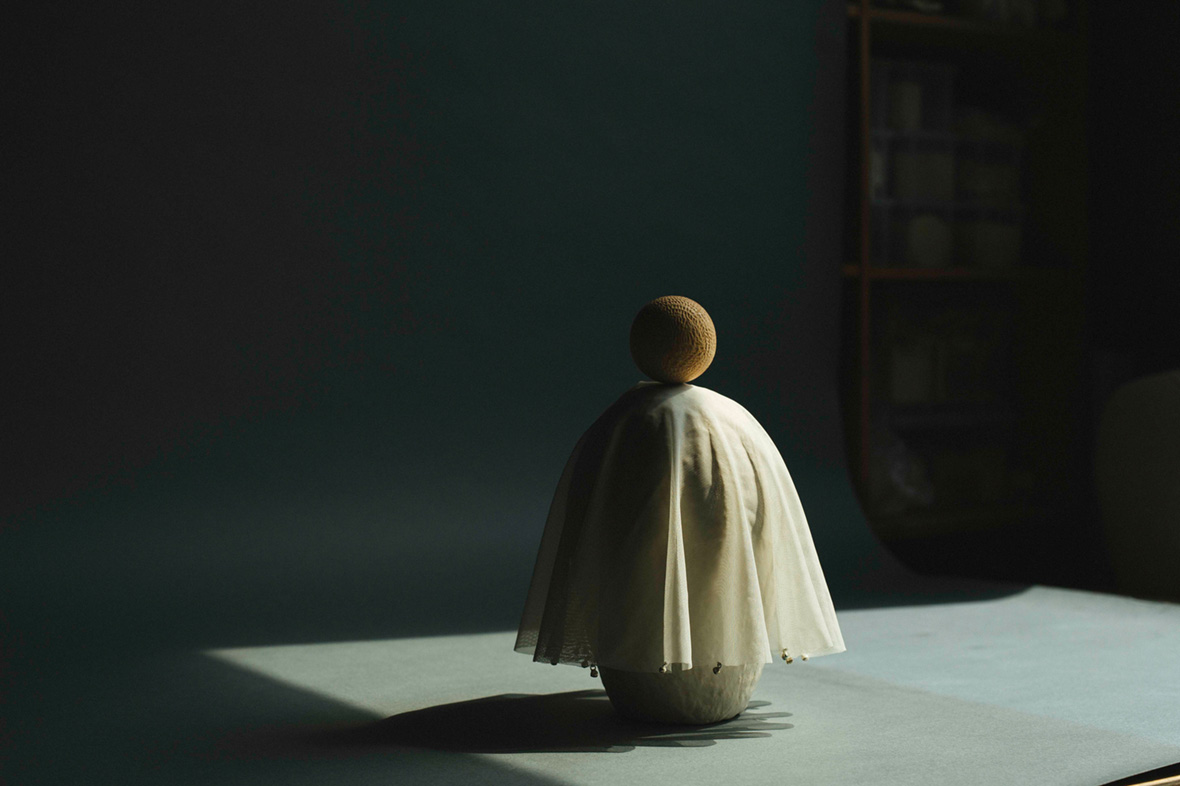
Kanako Kitabayashi spends her days surrounded by clay. Trained in traditional pottery and sculpture, the Japanese artist creates pieces that are neither strictly functional nor inaccessibly abstract. Varying in size and texture—some include braided ropes, while others are covered in grass-like shoots—they seem to embody the Japanese aesthetic of wabi-sabi, the notion that flaws can add beauty. And they all seem to share a plumpness that’s slightly suggestive, even unsettling.
Viewers often remark that Kanako’s sculptures, which were recently on display at Diego, a gallery and fashion shop in Tokyo, look more like rocks and stones than pottery. They lack a perfectly geometric shape or polished surface, and they’re dyed in understated pale or earthen tones. In the grooves and on the surface of these “rocks and stones,” yarn, resin plates, glass, tulle, and other materials burst forth like tender shoots, or like new leaves stretching outward.
日本青年艺术家北林加奈子终日与陶相伴。从工艺到雕塑,她一路接受着正统的学院派训练,手中的陶器却既不实用也不高冷。那些大大小小的陶塑总是圆滚滚的,要么扎着小辫儿,要么长出小草;既有日式传统的侘寂之美,又带着一点儿调皮或是不安分。
常有人说北林奈子的陶塑不像手工艺品而像石头。这些陶器没有完美的几何外形,颜色是安静的青白色或原土色,表面保留着两三分粗砺 。就是在这些“石头”的缝隙中或表面上,毛线、树脂、玻璃、绢网等材料像嫩芽一样破石而出,像枝叶一样自由伸展。
This sense of an artificially created nature is both a reflection of Japanese animism and an extension of the “soft sculpture” tradition of using pliable materials to mimic organic forms. Kanako’s threads, pearls, wires, strips of gauze, balls of feathers, and other objects call for a response different from detached appreciation. She seems to invite viewers to step into a miniature world and alight upon the details of each work—to touch the dimpled surface of baked clay, sit on a wire swing, or caress strands of yarn.
这种人为制造的天然感,既反映着日本传统中万物有灵的底色,又延续着软雕塑用非定形材料模拟有机体的脉络。面对这些作品中的那些丝线、小珠、铁丝、纱布、毛球等等,居高临下的“欣赏”姿态不再适用。这些作品邀请每一位观众把自身缩小再缩小,着陆到每一件作品的细处,去触摸陶土烧成后的坑洼表面,或坐在弧形的铁丝上荡个秋千,或与毛线的纤维肌肤相亲。
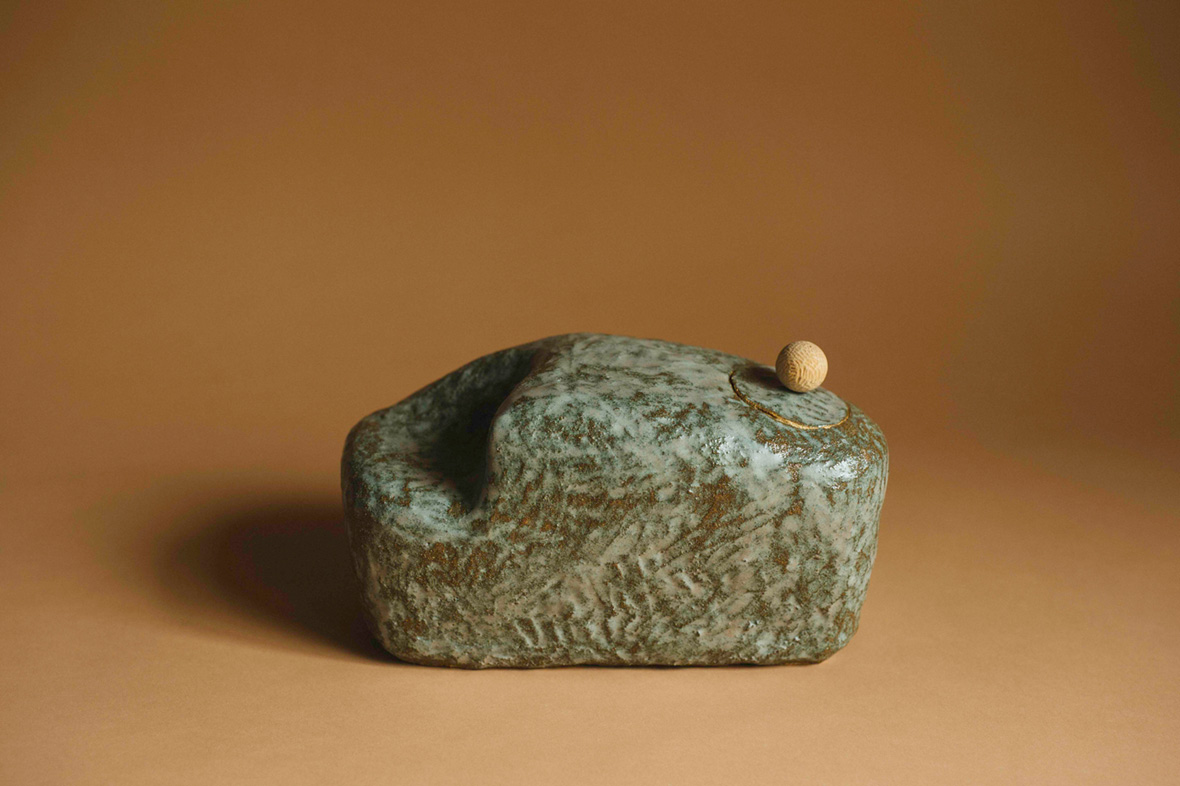
“Two years ago, at a show in France, viewers kept telling me that the style of my work was very Japanese, something I hadn’t thought about until then,” she says. “When working on a sculpture, I like to believe there’s a spirit living inside. I intentionally leave blank spaces to bring out the unseen elements, and maybe that’s part of what people mean when they call the work ‘Japanese.'”
“两年前在法国展出时,观众们纷纷表示我作品的风格‘很日本’,可在那之前我自己却从没有意识到这一点。”她说,“我做作品的时候总是相信物件中是住着灵魂的。我重视留白,希望把某些看不见的部分体现出来。可能这种感觉恰好与观众所理解的‘日本’这个词的某些内涵一致。”
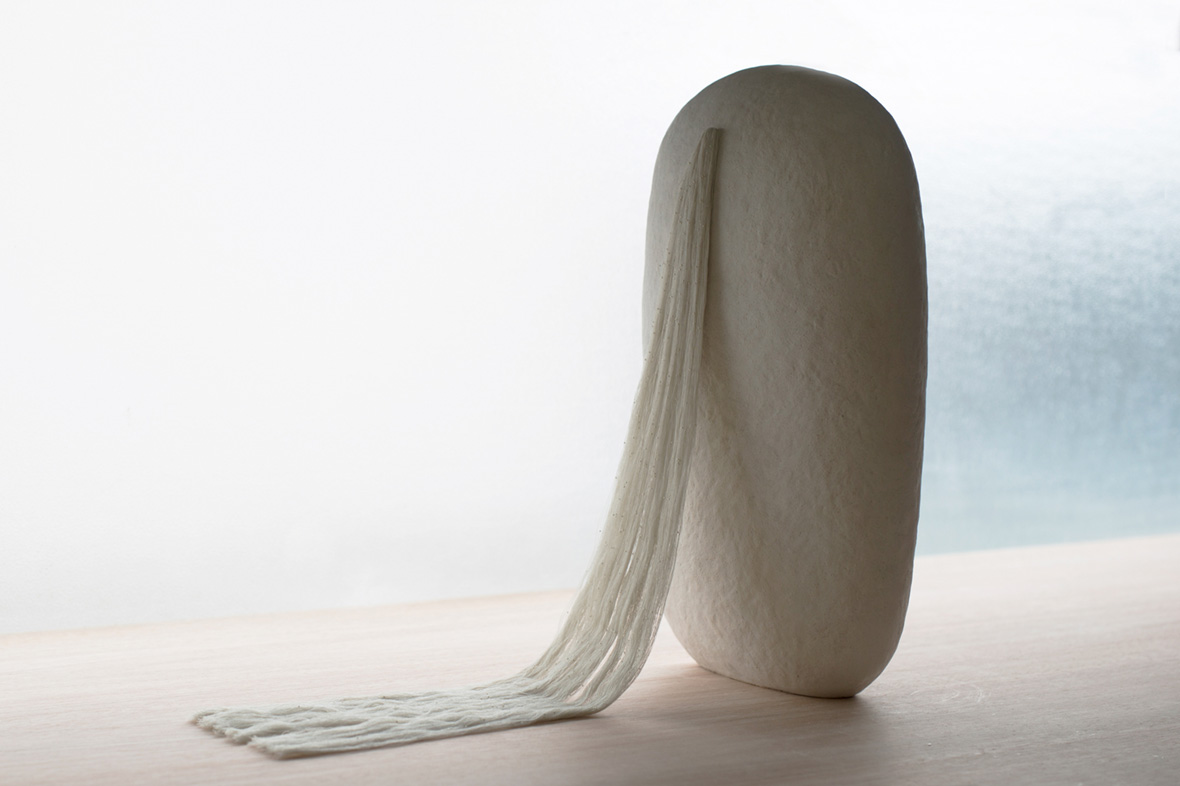
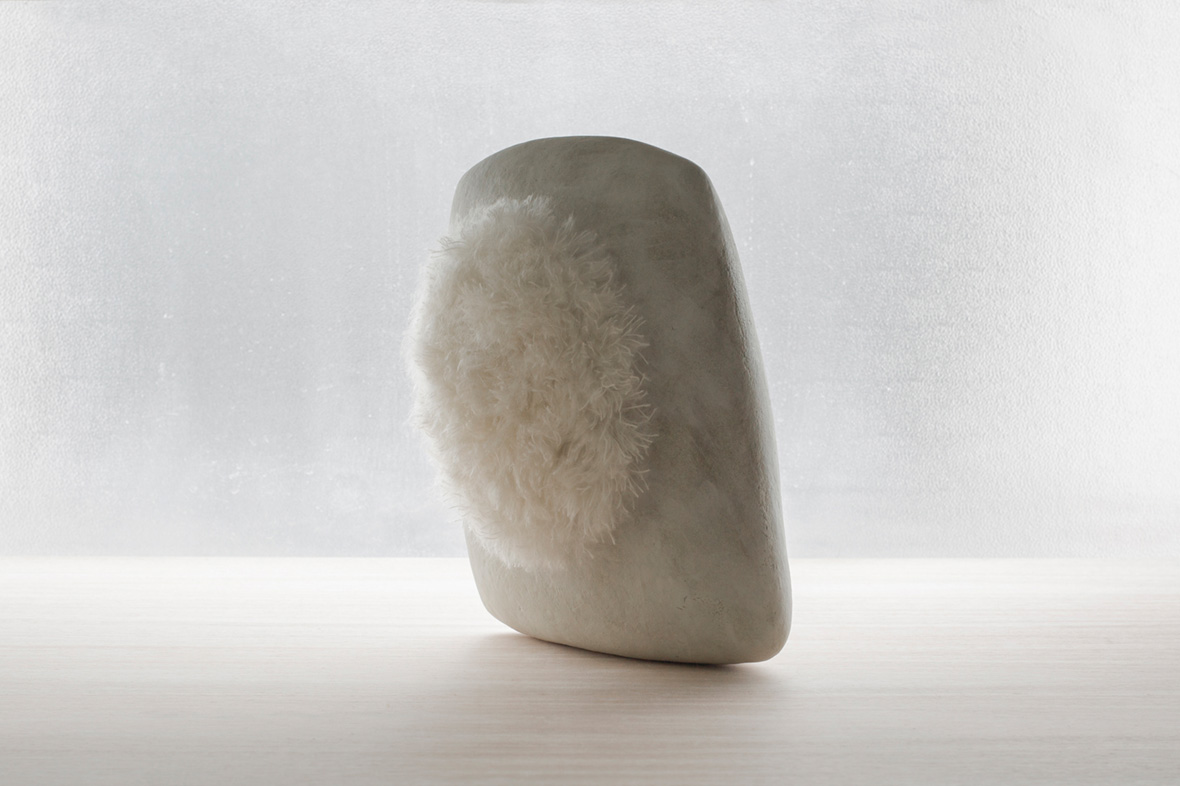
Kanako was born and raised in Tokyo, and she now lives in the city’s Shinjuku district. “Shinjuku is very crowded, and the space between people is so slight that everyone’s are always on the verge of bumping into one another. In such close proximity to others, we can grow desensitized and feel cut off. It can be overwhelming.” This constantly crowded, overwhelming world has instilled in Kanako a solemn appreciation for the minor moments of everyday life, those unexpected discoveries that send a tingle down your spine.
“Such discoveries may be exceedingly small, hidden in the dust of everyday life. Or they can be short-lived, immediately forgotten once you look away,” she says. “Yet they latch onto the undefined spaces in our mind, and when the memories are one day triggered, they can surface again in a sort of déjà vu.”
北林加奈子在东京出生长大,住在新宿区。她说:“新宿总是有很多人,人与人之间保持着一种几乎要彼此碰到却还没碰到的非常微妙的距离。在如此近的距离下,我们反而会失去很多感受,觉得有很多东西无法触碰,如同过载。”正是这个纷纷拥拥的过载世界使她更加珍惜日常生活中的琐碎风景,郑重地对待那些让心里“‘呼’地动了一下”的不经意的发现。
“这些发现可能极其细小,隐藏在日常的尘埃中;也可能非常短暂,视线离开时就会被立刻忘记。尽管如此,这些发现仍然设法锁定了我们记忆中一些未定义的空隙。有朝一日若有什么恰好触发了这里的开关,那些记忆就会再次浮现,似曾相识。”
Kanako’s recent Tokyo show, Urn, represents a formal return to the point where pottery and sculpture meet. Each piece is an empty vessel with a body and lid, yet as in her previous work, what these urns contain is not so much of a material as of a spiritual nature. They are windows onto another world, a way for the living to look back on the dead. Each one offers a moment of kindness, bringing some quiet to the surrounding world and clearing a little space for memory.
上月, 她的新作《骨壶》系列在东京的 Diego 画廊/时尚杂货店展出。这一系列在形式上回归到了工艺和雕塑的结合点,每件作品都是有身有顶的中空容器。不过一如既往,这些骨壶,即骨灰坛,作为容器所承载的更多的是精神怀想,而非物件用具。它们是现世连接他界的窗口,是生者追思故人的凭借。它们各自献出一份诚恳的好意,让周遭的世界安静下来,为怀念保留一点余地。
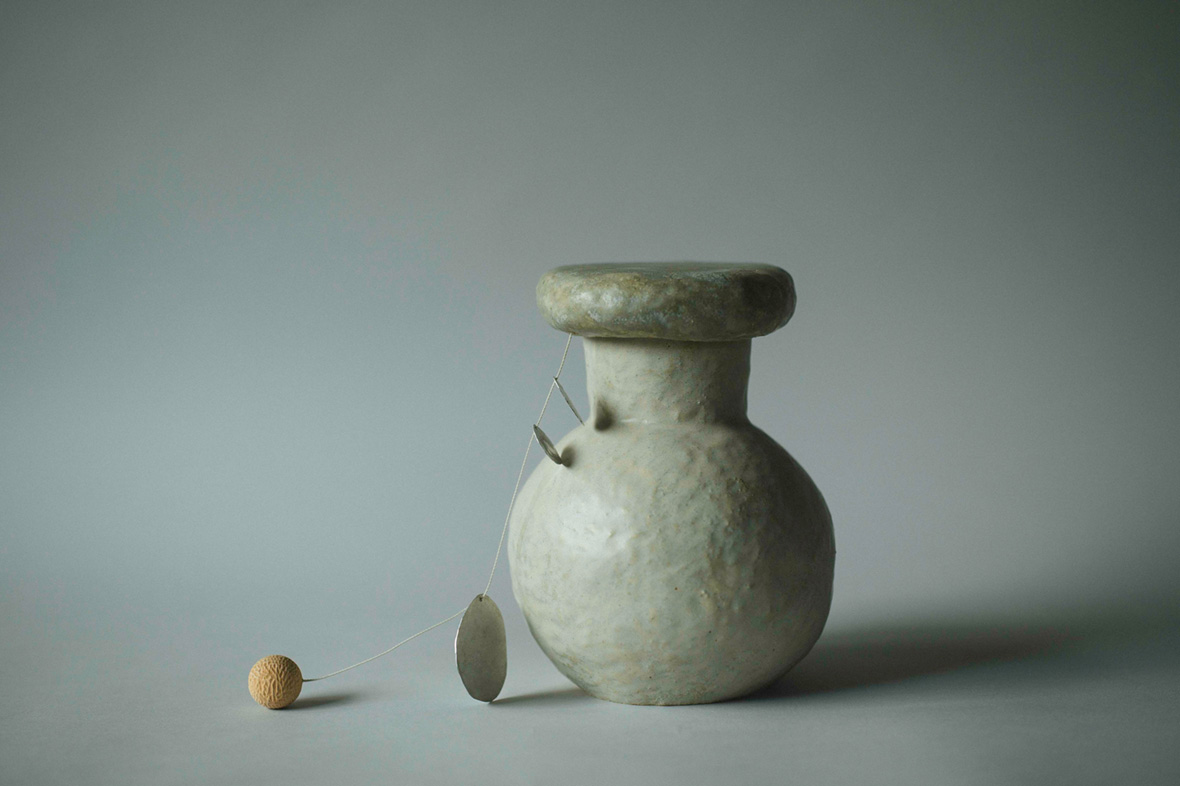
Like our stories? Follow us on Facebook and Instagram.
Website: kanakokitabayashi.com
Instagram: @kanako_kitabayashi
Contributor: Yangyu Zhang
English Translation: Allen Young


